Life style
The first ever social club in ceylon and the life of H.A Marshall-its builder
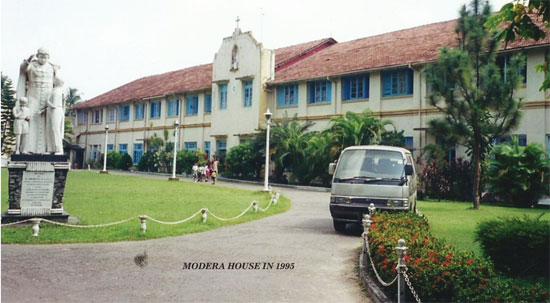
Whist bungalow
by Hugh Karunanayake
When the Portuguese and Dutch occupied the maritime provinces of Ceylon from the 16 th Century to the end of the 18th century, it was more or less a military occupation with the ever present danger of the coastal government being overrun by the monarch who ruled the Kandyan Kingdom. That imminent possibility was mitigated to some degree with the annexation of the maritime provinces by the British East India Co; which occurred during the wars of the French revolution. When the Netherlands came under French control the British made its move to oust the Dutch from Ceylon. The Dutch surrendered the island(or more precisely its maritime areas) to the British in 1796 after some half hearted resistance. In 1802 Ceylon was made a crown colony and it was clear that the British were here to stay. In 1815 the Kandyan Kingdom capitulated to the British through a combination of intrigue, and disaffection in the King’s court rather than military engagement. The doors of the country were now open for British settlement and to exploit the nation’s resources to the advantage of the Metropolitan power.
With Ceylon functioning as a British colony, the stage was set for its administration through a Governor appointed by the monarch in Britain. The administration was done through a Civil Service established by the government and by a legal system largely based on Roman Dutch Law supplemented by laws and customs of the local population. Governor Frederick North arrived in the island on 12 October 1798 accompanied by 9 officials who were to administer the island. Among them were three “officers” Sylvester Gordon, Robert Barry, and George Lusignan, each of them just thirteen years of age!! ( Gives some indication of the confidence of the Brits who thought that even teenagers could keep the”natives” in check) There was also in the group,Henry Augustus Marshall who was appointed First Clerk of the Civil Department which was the precursor to the Treasury. Marshall educated at Charterhouse and Oxford was reputed to be the best classics scholar in the island during his stay. He married the daughter of Colonel Robert Brooke Governor of the Island of St Helena. Mrs Marshall was apparently a wealthy woman as suggested by Governor North commenting on Marshall as “married comfortably”.Mr and Mrs Marshall are said to have been very popular socially and JP Lewis the colonial recorder and historian believed that she was the guardian of the tree referred to on the inscription on the stone tablet seen to this day next to the Wellawatte Bridge on Galle Road. Others have suugested that the Sophia referred to in the inscription is none other than Lady Brownrigg.
 At the time of British rule of the maritime provinces of Ceylon during late 18 th Century, it was the Galle Harbour that was the main point of entry to the island. The Colombo harbour was a tranquil bay used by fishing craft. The areas overlooking the bay of Colombo in the Mutwal area soon became elite residential areas, replacing the Fort and Pettah areas populated by the Dutch. The early British administrators were quick to acquire choice sites for their homes, the best of them overlooking the bay of Colombo. Many stately homes were constructed in the Mutwal, Modera areas. They included the Whist Bungalow, Modera House, Uplands, Elie House, Rock House, all of them located on vantage points overlooking the bay of Colombo. Three of the stately homes, Rock House, Whist Bungalow, and Modera House were built by Henry Augustus Marshall, the Civil Servant, in his private capacity.
At the time of British rule of the maritime provinces of Ceylon during late 18 th Century, it was the Galle Harbour that was the main point of entry to the island. The Colombo harbour was a tranquil bay used by fishing craft. The areas overlooking the bay of Colombo in the Mutwal area soon became elite residential areas, replacing the Fort and Pettah areas populated by the Dutch. The early British administrators were quick to acquire choice sites for their homes, the best of them overlooking the bay of Colombo. Many stately homes were constructed in the Mutwal, Modera areas. They included the Whist Bungalow, Modera House, Uplands, Elie House, Rock House, all of them located on vantage points overlooking the bay of Colombo. Three of the stately homes, Rock House, Whist Bungalow, and Modera House were built by Henry Augustus Marshall, the Civil Servant, in his private capacity.
Rev James Cordiner was appointed Chaplain to the 51 st Foot Regiment in Ceylon at the request of Governor Norh. A man of learning and of perceptive observation Rev Cordiner did a tour round the Island in 1800, which led him to publishing in 1807 one of the earliest English descriptions of the island in a two volume publication titled “A description of Ceylon, with narratives of aTour round the Island in 1800, the expedition to Kandy in 1803, and a visit to Ramessaram in 1804”.
Cordiner observed that “The English society at Colombo is uncommonly pleasant; and an assemblage of so many excellent characters is, certainly rarely to be found. The men at the head of the civil and military departments are particularly amiable: and all ranks live together in a mutual exchange of the most friendly and familiar intercourse….” And “Two weekly clubs which have been established at Colombo for several years past, contribute eminently to the promotion of social pleasures in the settlement. The elder is the Cocoa-nut, or Whist Club, at which the principal amusement is cards. The bungaloe where it is held, is beautifully situated, about four miles north east of Colombo.at the mouth of the Calany-ganga, which there receives the name of Mootwal. The club consists of twelve members, chosen from among the most respectable inhabitants of the place. They give dinners in rotation, and generally invite twelve strangers. Some of the members whose characters are celebrated for extensive hospitality, assemble a still greater number of guests. The entertainment is always liberal, and the assembly never fails to be animated with the highest share of convivial delight.The company repair to the villa about one o’clock in the afternoon, and play cards, read or otherwise enjoy the country, until four when dinner is announced. At half past five, or six o’clock, they rise from the table, make a circuit in their carriages or on horseback, and reach their respective homes before dark.”
What a glorious life the British pioneers would have lived. Little wonder that the aspiring”natives” modelled themselves on the social features of the life of the Brits. The creation of the Whist Club underscored the need for expatriate personnel to engage in social interaction. There were many other venerable institutions to follow in later years like the Colombo Club, Kandy Club, Hill Club all of which offered residential facilities. They were however not open to the local population, who not to be outdone formed their own Orient Club (a natives only residential club). Ethno specific sports clubs followed, and are there to this day eschewing some of the rigid ethno specific admission rules insisted upon at the beginning. Clubs were the order of the day during the nineteenth and twentieth centuries, and the more exclusive the membership the higher the social status that exclusivity conferred! The rise of the new breed of hostelry “the Five Star Hotel” seems to have put paid to all those status symbols and hallmarks of privilege.!
While it is on record that Marshall constructed Whist Bungalow, Modera House, and Rock House there is no evidence to suggest that he ever lived in any of them. The history of occupancy of Whist Bungalow is on the public record. On the closure of the Coca- nut Club, Whist Bungalow was acquired by Sir Richard Morgan, Supreme Court Judge. It was inherited by his son who died suddenly and it was then under the ownership of Mr Louis Peiris and his wife Selina who lived there for many years. The house was featured in the encylopaedic “Twentieth Century Impressions of Ceylon” published in 1907, when it was occupied by the Pieris family. The Famed German Naturalist Ernet Haeckel who visited Ceylon in the 1880s resided in Whist Bungalow and wrote wistfully about his life there in his book “A visit to Ceylon”. The ownership of the house appeared to have changed several times, once even used as a tea store!. The house is presently managed by the National Housing Development authority as a community hall.
The first ever socia…
Members of CSA would be interested to know that the forbears of two senior membesr of the Society once owned Whist Bungalow. Maureen Henricus nee Morgan is a direct descendant of Sir Richard Morgan, while Chandra Senaratne’s maternal grandmother was Mrs Selina Peiris!
Modera House the other creation of Marshall was occupied by the Armitage family, the leading coffee exporters from Ceylon in the nineteenth century. The coffee crash seriously affected the fortunes of the Armitages who sold Modera House to the De La Salle Brothers in the 1880s and moved to Alexandra House, Alexandra Place. The house was later the premises of Alexandra College. Modera House was the location of the film “Elephant Walk” a classic movie of the 1950s. It is now a school run by the De La Salle brothers. “Rock House” built by Marshall was acquired by the government and is Army property for the past over fifty years.
Mr and Mrs Marshall were a popular couple socially. Lieut -Col Campbell in his two volume book “Excursions, adventures, and Field sports in Ceylon” published in 1843 had this to say of the Marshalls ” A gentleman and his lady upon whose hospitality and friendship I had little or no claim, most kindly received me into their charming abode, situated on the sea shore about three miles from Colombo, and it is to the care and attention of Mr and Mrs Marshall that I attribute my temporary recovery.” Famed colonial recorder and writer J Penry Lewis believed that the Marshalls lived near the old toll gate which was in existence at Wellawatte near the bridge over the canal. There was a large banian tree under which a stone tablet was installed praising the virtues of a lady named Sophia. While Mrs Marshall carried her first name as Sophia, it has been suggested that there was another Sophia- viz Lady Sophia Brownrigg the Governor’s wife.
While that riddle remains to be solved, we have to this day the stone tablet with the inscription. It was lying near the entrance to the bicycle shed of the Savoy Cinema, but since has been erected upright near the bridge. Our former President of the Colombo Chapter Somasiri Devendra published a well researched article in his usual scholarly style, which appeared under the title “Wellawatte Inscriptions” in The Ceylankan #9 of Feb 2000. The “younger” club that existed during Marshall’s time, the “Quoit Club” was according to Cordiner situated in an opposite direction to Whist Bungalow, about two miles south of Colombo on the road leading to Point De Galle. Is it possible that Marshall built the Quoit Club as well and also resided there? Could Cordiner have misjudged the distance from Colombo of the Quoit Club ? If such is the case there is more certainty to the speculation that the Wellawatte tablet refers to none other than Sophia Marshall. We are still however lingering in the realm of conjecture !
Henry Augustus Marshall died on 23 January 1841 in his 64 th year and was buried in the old Galle Face Cemetery. A tablet was erected in St Peter’s Church,Fort by his widow and two son “in memory of an elegant classical scholar and a sincere Christian.
Colombo of the eighteenth century was a tranquil place, rich in vegetation, and serene in outlook. It was James Cordiner who observed that: “Nothing about Colombo is more apt to excite admiration than the flourishing state of the vegetable world. So much beauty and variety are in few countries equalled, and nowhere excelled”. Is it a forlorn wish to hope for a revival of Colombo’s lost beauty ? Only time will tell !!
- News Advertiesment
See Kapruka’s top selling online shopping categories such as Toys, Grocery, Flowers, Birthday Cakes, Fruits, Chocolates, Clothing and Electronics. Also see Kapruka’s unique online services such as Money Remittence,News, Courier/Delivery, Food Delivery and over 700 top brands. Also get products from Amazon & Ebay via Kapruka Gloabal Shop into Sri Lanka.
Life style
LUXASIA aims to lead luxury beauty’s growth in Sri Lanka
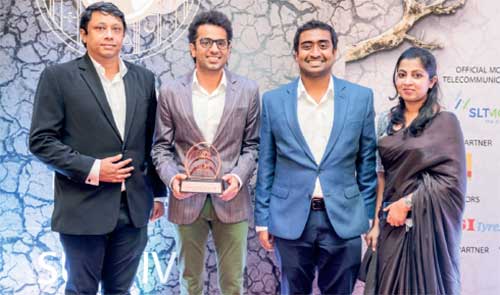
Sri Lanka is a land renown for stunning natural beauty. Yet, LUXASIA still managed to usher in a different kind of beautiful to the market through its expertise in luxury beauty retail and omni-distribution.
In November 2019, LUXASIA unveiled its inaugural classy beauty counters at Odel, One Galle Face. Since then, it has brought enchanting fragrances from luxury brands such as Burberry, Calvin Klein, Gucci, and Marc Jacobs, as well as trendy skincare from KORA Organics to beauty-lovers in an exquisite and captivating retail format.
Now, having successfully overcome the challenges in 2020 imposed by COVID-19 and related lockdowns, LUXASIA is ready and excited to thrill Sri Lankan consumers again. This time, it is with the launch of both skincare and make-up collections from the prestigious Japanese beauty brand, Shiseido. Arriving with a glamorously magnificent pop-up at One Galle Face from 8 to 14 February 2020, LUXASIA promises to bring memorable consumer experiences and a feast for the eyes that showcases the best in Japanese beauty.
Leading up to this pop-up, LUXASIA partnered the Key Opinion Leaders (KOLs) and top influencers of Sri Lanka to excite the beauty community with a sneak peek of what Shiseido have to offer. This campaign garnered more than 100,000 social interactions, with over 1.2 million social media impressions, piquing consumers’ fascination in Shiseido’s award-winning and best-selling serum, The Ultimune Power Infusing Concentrate.
Looking ahead into 2021, LUXASIA aims to continue delighting consumers with even more fresh retail innovations to spice up the luxury beauty scene in Sri Lanka. Soon, fragrance enthusiasts can expect a unique pop-up of all the scents that Luxasia carry, featuring new launches from Davidoff and Calvin Klein, as well as other interesting novelties. Beauty-lovers can also expect more limited edition products and gifts-with-purchases, interesting workshops, as well as seasonal offerings in the coming months. Concurrently, LUXASIA also aspires to continue grooming the Sri Lankan beauty community through more entertaining collaborations with KOLs throughout 2021.
LUXASIA sees immense potential in Sri Lanka’s fast-growing beauty market and has been its voice in the international beauty industry. For some time now, LUXASIA has been relentlessly reaching out to numerous luxury beauty brands across to world to interest them in Sri Lanka. While it is encouraging to see the first-fruits, LUXASIA is aiming much higher. Forging ahead, LUXASIA strives to champion and lead the growth of luxury beauty in Sri Lanka, through even more partnerships with great brands, and by continuously delighting consumers.
Life style
Newly published guide opens many windows on whale watching
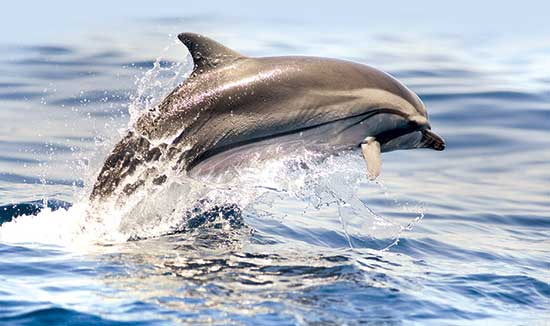
by Ifham Nizam
Shipping lanes to the south of Dondra pose the threat of ships colliding with whales as the area has very rich marine life which also attracts whale watching boats, says prolific wildlife writer and photographer Gehan de Silva Wijeyeratne, author of the recently published ‘A Naturalist’s Guide to the Mammals of Sri Lanka’.
He says international shipping industry organizations have written to the government to push back the existing shipping lanes and if no action is initiated, there is the danger of whale watching boats colliding with vessels.
Dr. Susannah Calderon and her colleagues at the University of Ruhuna have recommended the shipping lanes be moved 15 nautical miles south. The cost impact to all concerned will be negligible, but it significantly improves safety at sea, especially at night when the sea is dotted with the lamps from hundreds of small fishing crafts in the path of giant container carriers.
“It is primarily a safety issue though an important secondary impact will be that it reduces fatal collisions with whales, while generating favourable publicity for the government of Sri Lanka. It boils down to moving the shipping lanes further south and saving lives, Wijeyeratne stressed in an interview with The Sunday Island.
Asked what’s special about his latest publication, he said: “This is the first photographic field guide which covers nearly all of the mammals found in Sri Lanka. It covers 96 per cent of the land and marine mammals. The book, which is portable and affordable, also contains a large number of images from 40 photographers which are practically useful in the field to identify 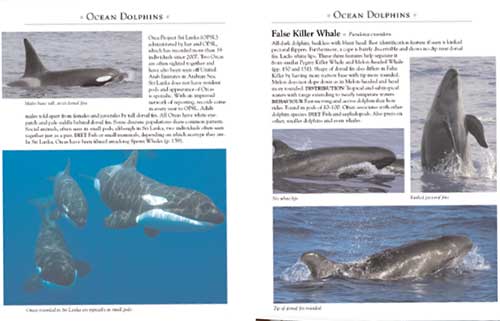 a mammal to species level. It also covers a number of small, discrete, nocturnal mammals whose existence that even many local wildlife enthusiasts will not be aware of.”
a mammal to species level. It also covers a number of small, discrete, nocturnal mammals whose existence that even many local wildlife enthusiasts will not be aware of.”
On the book’s coverage of the marine mammals, Wijeyeratne said there are two noteworthy aspects. Firstly, it covers all the species recorded in Sri Lankan waters expect for one, the Omura’s Whale. This will be included in a second edition. Secondly, it uses images of the whales and dolphins (cetaceans) which will show the animals the way a whale watcher will see them on the surface.
Artwork that shows the whole animal is important, but in field conditions, they are often of limited value to identify cetaceans which only show a little of their upper body in sections at a time they surface.
Q: You were the first to publicize that Sri Lanka was the best location for Blue Whale sightings and offered the best chance to see a superpod of Sperm Whales. Can you explain briefly how you set about branding Sri Lanka as a top international destination for whale watching?
A:
I started with field work to ascertain the facts and launched a media campaign initially with Jetwing Eco Holidays and Jetwing Hotels which was supported over many years by the Sri Lanka Tourism Promotion Bureau (SLTPB) and others in the media and tourism business. I have published 37 articles on whale watching in Sri Lanka. The first, in May 2008, was pivotal as it boldly stated that Sri Lanka was best for Blue Whales. This set everything in motion. My articles give due credit to many people who were a part of this amazing story. This includes Dr. Charles Anderson who first told me it would be feasible to see Blue Whales from the South.
A Belgian millionaire philanthropist who prefers to remain anonymous and helped create the infrastructure for whale watching by 13 tsunami affected fishing youth who set up Mirissa Water Sports and Sue Evans who was important for connecting all of us and Anoma Alagiyawadu (the Jetwing Lighthouse Naturalist) whom I tasked with collecting the initial data for the Encounter Rates I publicized in the media.
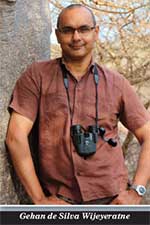 Remarkably, no Sri Lankan marine biologist played any role in publicizing whale watching in the early years. However, soon after, they benefited by being thrust into the media spotlight by film crew researchers who had read the publicity which began with my various widely disseminated articles. Having read them, and sometimes after conversations with me, the film crews and the press came to Sri Lanka and incorporated local marine biologists into their story.
Remarkably, no Sri Lankan marine biologist played any role in publicizing whale watching in the early years. However, soon after, they benefited by being thrust into the media spotlight by film crew researchers who had read the publicity which began with my various widely disseminated articles. Having read them, and sometimes after conversations with me, the film crews and the press came to Sri Lanka and incorporated local marine biologists into their story.
At the time I broke the first story, I do not think any of the local marine biologists had even one image of a Blue Whale of a publishable standard or had any idea that Sri Lanka was the best place in the world to see Blue Whales. Hopefully, the increased profile of local marine biologists has made it easier for them to raise the funds needed for their important research.
Q: Did the Sri Lanka Tourism Promotion Bureau help your efforts with publicity and branding?
A:
Yes indeed. At the start of the publicity campaign, we produced a series of informative and attractive publications designed by Chandrika Maelge. These were printed and distributed at key consumer and travel trade fairs such as the Bird Fair, WTM and Destinations where a number of important press and tour operators were informed about Sri Lanka being a good place for whales. At some of the press drinks events in London hosted by Jetwing Eco Holidays, around 35-45 press people would attend. These events were held in collaboration with the London Office of the SLTPB.
In some years, As many as three of these press events were held allowing personal interaction with a wide pool of media people. Another important and later development is the role played by Nalin Perera who ran the SLTPB office in London for several years and attended many consumer and travel trade fairs. I had developed media briefs for him which he would print and distribute. In one conversation, he estimated that he had printed and distributed over 10,000 copies of this material.
There were others who also disseminated my stories to the international press; a notable example being Chitral Jayatilake who shared my publicity pdfs with various wildlife documentary makers he invited to Sri Lanka.
Q: Did everyone readily embrace your ideas?
It took a couple of years. I remember even into the second year of the publicity campaign there were doubts from the big companies in tourism.
I remember Srilal Miththapala who was then President of The Hotels Association of Sri Lanka speaking to me and joining a celebrity whale watching event I was leading with Shyamalee Tudawe. This was organized by Olivia Richli of the Amangalla in Galle.
Srilal wanted to report back to the association if there was any truth to the claims being made by me about how easy it was to see Blue Whales. On the coastline, the people running small guesthouses readily embraced the story as tourists who were reading my stories turned up with copies of my articles and asked for boats to take them whale watching. The international press also readily took it on as I provided credible data.
Q: What do you say to criticisms that whale watching needs better regulation?
I agree on the need for better regulation and higher standards. The tourism industry has played its part in publicizing whale watching. Other state agencies also need to step up their efforts to regulate the industry in a way that is good for the welfare of the animals and provide a good visitor experience.
Q: What do you expect ‘A Naturalist’s Guide to the Mammals of Sri Lanka’ to achieve?
I would like people to understand that there is still a lot to be discovered about Sri Lanka’s mammals and I hope this portable and affordable guide will find its way into the hands of local naturalists and inspire more research and more practical steps to conserve habitats and species.
Life style
Modern Brides and Grooms collection by LOVI Ceylon and friends

Brides and Grooms of Sri Lanka – Reimagined
“Together we’re creating moments of happiness and cherished memories for the new couple and their families” said Founder and CEO of LOVI Ceylon, Asanka de Mel, as he introduced LOVI Ceylon’s Groom collection. Each groom’s look was paired with extraordinary creations from Sri Lanka’s top bridal designers, jewelers, florists, hair and make-up artiste and was captured by story-telling photographers.
The presentation graciously hosted by the Taj Samudra and Shangri-La hotels saw 30 leading designers working hand in hand to infuse fresh ideas, celebrate cultural diversity and show-off Sri Lankan couture—the island’s hand craft heritage.
The stunning bridal costumes were painstakingly made by renowned designers Messrs. Dhananjaya Bandara, Rishard Raheem, and Michael Wijesuriya as well as Mses. Indi Yapa Abeywardena of Brides by INDI, Sonali Dharmawardena, Darshi Keerthisena of Buddhi Batiks, Ramona Oshini, Sandani Perera of IKIGAI Bridal, and Jaish Parathalingam of Aashkii. The newcomer, Ms. Anusha David also presented her couture creations under the label Gabriel.
“We want our Groom and all of the men in the wedding including the groomsmen, dads, young boys and friends, to be themselves–to feel rooted in culture, well dressed and at ease on the wedding day,” says Asanka. Celebrating the religious and cultural traditions including Buddhist, Christian, Hindu, Kandyan, Malay, Muslim, Sinhala, Tamil and western traditions of the island LOVI Ceylon’s Grooms’ range presented modern sarongs paired with formal shirts, jackets, kurtas and more. They were paired with sarees, dresses, lehengas, pant suits and an array of breathtaking outfits. There were many looks offered for the Sri Lankan diaspora, as well as couples seeking inspiration for destination weddings.
As the designs progressed from sketch to stitching, our jewelry partners Careems, Lalitha, Mallika Hemachandra, Tiesh and Vogue jewelers added their brilliant sparkles with handcrafted fine jewelry made of precious metals encrusted with diamonds, sapphires and rubies. And what wedding would be complete without flowers? Bringing the latest floral creations were florists Designer Flowers, Flowers by Joan and Karen Forbes, Lassana Flora, and Supreme Flora who made the spectacular bridal outfits blossom with their creations.
Breathing life into these wonderful creations with superb hair and make-up was anchor of the shoot, Ms. Nadiya Fernando and her collaborator Omesh, while Ramani Fernando Salons, Shane Perera, Viran Peter, Brides by Leena and Talia designs, also worked magic on the models.
The father son duo Dinuka and Dineth Fonseka of Studio3000 took on the herculean task of capturing all the creations as the anchor photography partner. The works of Ashene Bernard, Amarante Studio, Geeshan Bandara, and Portrait Culture were also presented in imaginative and artistic captures.
De Mel expressed his thanks to the wonderful models who brought the visions and fancies of the designers to life, as well as poet and author Ashok Ferrey for being the MC of the shoot and providing an eloquent commentary, delivered with his inimitable panache!
“We have world class craftsmanship here, it’s fun to work with so many experts, who just happen to be friends, to present a beautiful collection that could nudge the course of Sri Lankan clothing identity” said Asanka when asked about the work that went into this.
As he rightly reminded the gentlemen to choose wisely, “on that special wedding day, when all eyes are on her–her eyes are on you!”









